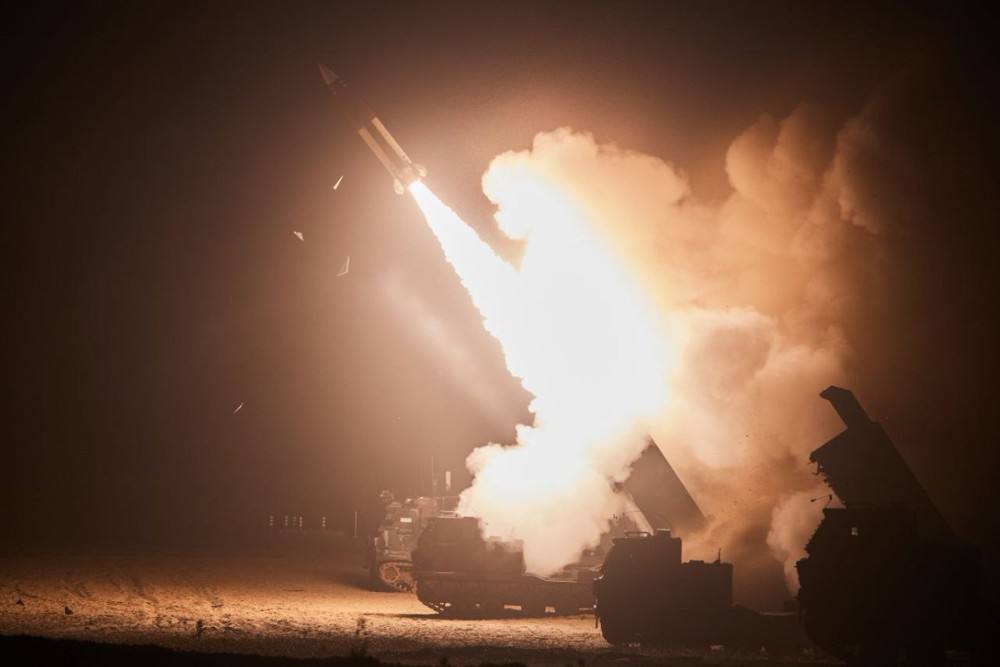Biden’s Final Shot at Putin’s Heart
Biden’s Final Shot at Putin’s Heart
The White House allows Kyiv to use long-range missiles against Russia, but this shift is more political than military. Donald Trump hasn’t yet settled into the Oval Office, but just the news of his return seems to have accelerated events on the Ukrainian scene.
After months of hesitation and resistance, Joe Biden has indeed allowed Kyiv to use the ATACMS, a long-range tactical missile system of the army, to target deep into Russian territory. These systems have a range of up to 300 kilometers and, according to informed sources, will likely be used initially to target the Kursk region of Russia, where Ukrainian forces captured parts of Russian territory last summer. Washington’s shift comes after the deployment of thousands of North Korean troops to support Moscow and extensive Russian airstrikes on Ukraine’s energy infrastructure over the weekend.
But most importantly, this decision is made two months before Trump’s return to the White House. As we know, the elected president is hesitant to provide more aid to Ukraine and has vowed to end the war quickly, without specifying exactly how. According to various sources close to the current administration, the White House intends to place Kyiv in the best possible position before the peace negotiations that the new president must lead at the start of his term.
A Controversial Call
After receiving criticism in recent days, even from Volodymyr Zelensky, German Chancellor Olaf Scholz defended his decision to call Russian President Vladimir Putin for the first time in two years. Scholz stated that last Friday’s conversation was important to make Putin understand that Germany, Europe, and many other countries will not reduce their support for Ukraine. However, this move, which European allies were unaware of, provoked a strong reaction from Polish Prime Minister Donald Tusk.
Tusk said that last night’s attack, one of the largest of this war, showed that phone diplomacy cannot replace the real support of the entire West for Ukraine. Regardless of the controversies, it does not seem that Germany’s initiative has been very successful. Berlin sources reported that the conversation was very detailed but concluded that there was little change in the Russian president’s view of the war, and this is not good news. According to the Kremlin, Putin told his counterpart that there would be no peace agreement without territorial concessions from Kyiv. Zelensky stated that this call has, in fact, opened Pandora’s box, which is what Putin has long sought.
Is Europe Ready for the Worst?
According to Biden administration officials, the decision to allow the use of ATACMS to target deep into Russian territory is a response to Moscow’s decision to use North Korean forces in the war against Ukraine. The U.S. shift may allow Ukraine to use French and British-supplied SCALP missiles to target Russian territory. British Prime Minister Starmer and French President Emmanuel Macron had been pressing Biden on this matter.
European leaders continue to emphasize their support for Ukraine against Russian aggression, but soon they must make difficult decisions about how they intend to continue supporting their ally while also ensuring their own security. There is nothing to suggest that Trump intends to do anything different from what he has promised, namely suspending arms shipments to Ukraine and then reaching an agreement with Putin, ignoring the demands of Ukrainians and Europeans.
If this scenario materializes, the 27 European Union countries must have a clear stance on how prepared they are to prevent others from imposing decisions on them. French President, after meeting with NATO’s new Secretary-General Mark Rutte in Paris, clarified that no decision regarding Ukraine should be made without Ukrainians, and no decision in Europe should be made without Europeans.
Too Little, Too Late
On the military front, the use of American missiles and perhaps even British and French missiles will give Kyiv more room to maneuver. The Ukrainian army is under attack in the Russian Kursk region, a region Moscow wants to keep as a bargaining chip in case of negotiations, and also in eastern Ukraine. However, several observers point out that the authorization to use ATACMS, of which Kyiv has a limited number, is unlikely to change the balance of power on the battlefield.
As we approach the winter season, operations on both sides are likely to slow down, and with Russian forces controlling nearly one-fifth of Ukraine’s total territory. Nevertheless, the U.S. decision was welcomed in Kyiv, although Ukrainian officials did not hide their disappointment that if this decision had been made earlier, it could have had deeper implications. On Tuesday, November 19, Ukrainian President Zelensky spoke at a video conference in the European Parliament in Brussels on the occasion of the thousandth day since the start of the war.
As expected, he requested the supply of weapons so that his country could negotiate with the Kremlin from a position of strength to end the war. The arrival of Antony Blinken, the current U.S. Secretary of State, in Brussels on Tuesday, November 12, clearly indicates the urgency of this situation. The Biden administration and Europeans have two months to decisively strengthen Ukraine.
Military experts debate the real impact of Biden’s decision on Kyiv’s ability to resist and prevent Russian aggression. For some, the American decision may be too little, too late, and unable to change the fate of the war. What is clear is that Biden intends to strengthen his administration’s political legacy of supporting Kyiv and send a political message to Europe ahead of the foreign ministers’ meeting in Brussels. Although this Western support is cautious and slow from the Ukrainian perspective, it gradually crosses all the red lines set by the Kremlin. It remains to be seen whether Trump will reinforce this message or weaken it.

